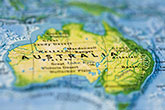Wärtsilä Interview at the Green Shipping USA Summit 2017
Published by Will Owen,
Editor
LNG Industry,
Kevin Humphreys, Business Development Manager for Marine Solutions & Services at Wärtsilä, answers questions whilst attending the Green Shipping USA Summit 2017.
The IMO Ballast Water Convention (BWC) will enter into force on 8 September 2017. Ships will be required to manage their ballast tanks to remove or render harmless the ballast water discharge of invasive species. Did shipowners do they homework to get prepared for this implementation?
That is a good question. The answer is yes and no. I have experience with some shipowners that have done really good homework, planned well and they are ready to start implementing ballast water solutions on their vessels. I think you will also see some owners that scramble a little bit to comply and that is going to be difficult for them to make sure they are properly engineered, planned and installed. Planning is really the key on this, we’d like to see, you know, aggressive engineering, scanning and design work that really avoids problems in a shipyards and frankly I have heard of horror stories of companies that have ordered equipment thinking it was easy to install and they weren’t able to leave the yard because class wouldn’t approve their install. So the answer is yes and no, I think the responsible companies have done their homework, they understand what the regulations are now and they are moving forward.
Some shipowners don’t see benefits in BWTS. Why do you think they have such an attitude? Maybe they do not have enough time to prepare for this?
Yeah, I think you have to split the answer into two pieces. Most of the shipowners I deal with see the benefit on the environmental side, they want to be good environmental stewards, they don’t want to be operating in a way that damages the environment. So from that standpoint, I think they see the benefit of it, but by the same token, we have to understand that this is an expensive regulatory regime and we need to be sensitive to that. As an OIM (Offshore installation manager) we want to be able to help them come into compliance, but the most important thing is our customers are profitable and are in a good operating situation. So, I think the answer to the question is two parts: on the one hand, most operators are very responsible to the environment and don’t want to be seen as bad actors, by the other hand it is an expensive proposition so they are being cautious, which I don’t think we can blame them for, they are being careful, they are being sensitive to how they can best implement this regulation: being environmentally sensitive at the same time being responsible to their owners and shareholders.
You’ve been working in Wärtsilä for about 6 years now. Briefly, characterize the evolution you’ve seen in BWTS technology?
I think we are at the point which for the most part the OIM’s have technology that is workable and will meet the needs of the industry. There are always growing pains with new technology, there is always growing pains in applying technology from land-based applications into marine-based applications, it is a radically different environment. So I’d say it has been an evolutionary change, I think we are fairly mature but over the next couple of years, you are going to see some of the kinks worked out as far as the application of the specifics of operating the technology. And I think one of the most important things is that we are getting to the point where it’s not really hardware, it’s software, in other words, it’s the people and it’s the proper training of the crews, it’s getting them to understand what the regulations are and now the challenge is going to be creating a company culture of compliance with the environmental regulations. That’s really going to be the critical part, I think if you talked to the most of the consultants of the industry, in the ballast water area, the issue is not the equipment per say, the issue is are the crews trained and able to operate the equipment properly. So, the evolution is now going away from the actual hardware technology into how do I train and properly operate from the crew standpoint.
Read the article online at: https://www.lngindustry.com/lng-shipping/21092017/wrtsil-interview-at-the-green-shipping-summit-2017/
You might also like
Norton Rose Fulbright advises Tokyo Gas on sale of interests in four LNG projects
Norton Rose Fulbright has advised Tokyo Gas Co., Ltd and related entities on the sale of its minority interests in four Australian LNG projects.

